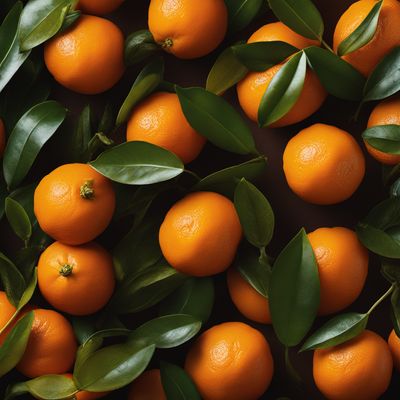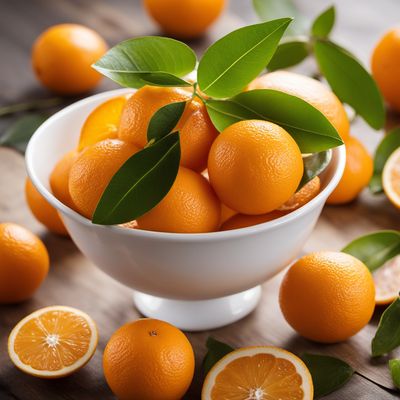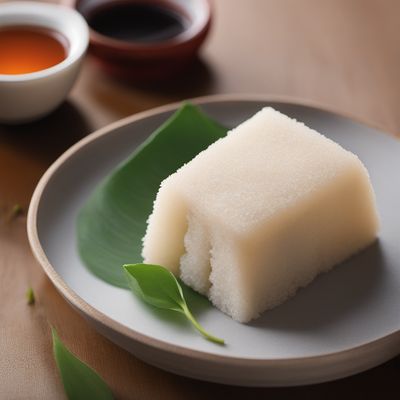
Ingredient
Tangerines
The Tangy Delight
Tangerines are small citrus fruits known for their vibrant orange color and refreshing, tangy flavor. They are widely used in culinary applications, from fresh consumption to juice, desserts, and even savory dishes.
Origins and history
Tangerines are believed to have originated in Southeast Asia and were later introduced to Europe and North America. They have a rich history in Chinese culture and are often associated with good luck and prosperity. Tangerines were brought to the United States in the 1800s and have since become a popular citrus fruit worldwide.
Nutritional information
Tangerines are a good source of vitamin C, providing about 53% of the recommended daily intake per serving. They also contain dietary fiber, vitamin A, potassium, and antioxidants that contribute to overall health and well-being.
Allergens
Tangerines are not known to be common allergens, but individuals with citrus allergies should exercise caution when consuming them.
How to select
When selecting tangerines, look for fruits that are firm, heavy for their size, and have a glossy, smooth skin. Avoid any tangerines with soft spots, mold, or wrinkled skin, as these may indicate spoilage. Additionally, choose tangerines that feel dense and have a fragrant aroma.
Storage recommendations
To maintain the freshness of tangerines, store them in a cool, dry place away from direct sunlight. They can be kept at room temperature for a few days or refrigerated for up to two weeks. It is best to store them loose or in a breathable bag to prevent moisture buildup and mold growth.
How to produce
Tangerines can be grown in home gardens or containers, provided they have access to full sun and well-drained soil. They are relatively easy to grow from seeds or by grafting onto rootstocks. Regular watering and occasional fertilization will help ensure healthy growth and fruit production.
Preparation tips
Tangerines can be enjoyed fresh as a snack, juiced for a refreshing beverage, or used in a variety of culinary preparations. They add a burst of citrus flavor to salads, desserts, marinades, and sauces. Tangerine zest can also be used to enhance the aroma and flavor of baked goods and cocktails.
Substitutions
Oranges, clementines, and mandarins can be used as substitutes for tangerines. While they may have slightly different flavor profiles, they can provide a similar citrusy taste and texture in recipes.
Culinary uses
Tangerines are commonly used in salads, fruit salads, marmalades, jams, sorbets, and baked goods. They are also popular in Asian cuisines, where they are used in stir-fries, sauces, and marinades. Tangerine juice is a common ingredient in cocktails and mocktails.
Availability
Tangerines are widely available in regions with a suitable climate for citrus cultivation. They are commonly grown in countries such as Spain, the United States, China, and Morocco.
More ingredients from this category

Clementines
Sunshine in a Peel: Clementines

Cleopatra mandarins
The Citrus Jewel: Discover the Allure of Cleopatra Mandarins

Mediterranean mandarins
Sun-Kissed Citrus Delight

Mandarins
The Citrus Jewel

Minneolas
The Citrus Gem

Other hybrids of Citrus reticulata, not elsewhere mentioned
Citrus Reticulata Hybrids: Unveiling the Zesty World of Citrus Delights

Tankan mandarin
The Citrus Jewel

Tangors
The Zesty Hybrid: Unveiling the Tangors' Citrus Symphony

Satsumas
Sweet and Tangy Citrus Delights

Calamondins
The Zesty Jewel of Citrus


